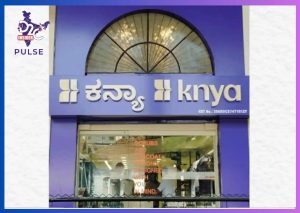Ola Electric has board approval to get up to ₹1,500 crore through equity shares and convertible securities.This fundraising aligns with the company’s D2C expansion plans and shows the changes in India’s D2C market. The money will support Ola Electric’s finances as it grows its presence in the electric-two-wheeler D2C market. At a meeting on October 25, 2025, the board approved the plan and is considering options such as a rights issue, qualified institutional placement (QIP), private placement, or other methods.

This action happens a little over a year after Ola Electric’s August 2024 listing and follows both growth hopes and challenges in India’s D2C business. Ola Electric’s position as a D2C brand in India is worth noting. Its business model includes electric scooters, charging stations, and direct consumer contact. Though, it has faced competition from companies like Ather Energy and TVS Motor Company. In Q1 FY26, revenue dropped by about 50% year-over-year to ₹828 crore, and net loss increased by 23% to ₹428 crore. This proposed raise is a way to strengthen its size and R&D, supporting the brand’s D2C growth plan.
In India’s D2C market, Ola Electric’s plan shows how even big D2C businesses now need more money to keep growing, create new products, and expand. The fundraising reflects D2C industry trends where scale-ups are handling profitability, competition, and supply chain changes. By getting new funds, the company is showing its plan to focus on its D2C business in India by improving manufacturing (a gigafactory in Tamil Nadu), strengthening supply chains and logistics, and possibly moving into related areas like battery storage.
Also, investors like SoftBank Group, Tiger Global Management, and Z47 reduced their shares in Ola Electric earlier in 2025, which raised questions about investor feelings and valuations in the D2C market. But the board’s choice to raise new capital shows a belief in long-term value creation in India’s direct-to-consumer space.
For India’s D2C business community, this raise is one of the biggest funding stories of 2025. It’s about more than money, it’s about strengthening Ola Electric’s D2C brand, improving direct consumer relationships, growing product launches, and increasing its D2C strategy. As D2C market trends in 2025 point to a move from online to manufacturing, direct-to-consumer, and offline models, Ola Electric’s plan fits well.
Though, execution is what matters. The company needs to use the funds to improve customer retention, expand charging stations, improve battery tech, and win back market share. For people in India’s D2C market, this shows that the direct-to-consumer story is becoming more mature, moving from quick growth to steady growth, and from funding to doing.
In short, Ola Electric’s ₹1,500 crore fund-raise plan is a key part of its D2C brand and India’s D2C market. It shows how the direct-to-consumer business in India is changing in size, goals, and complexity.








